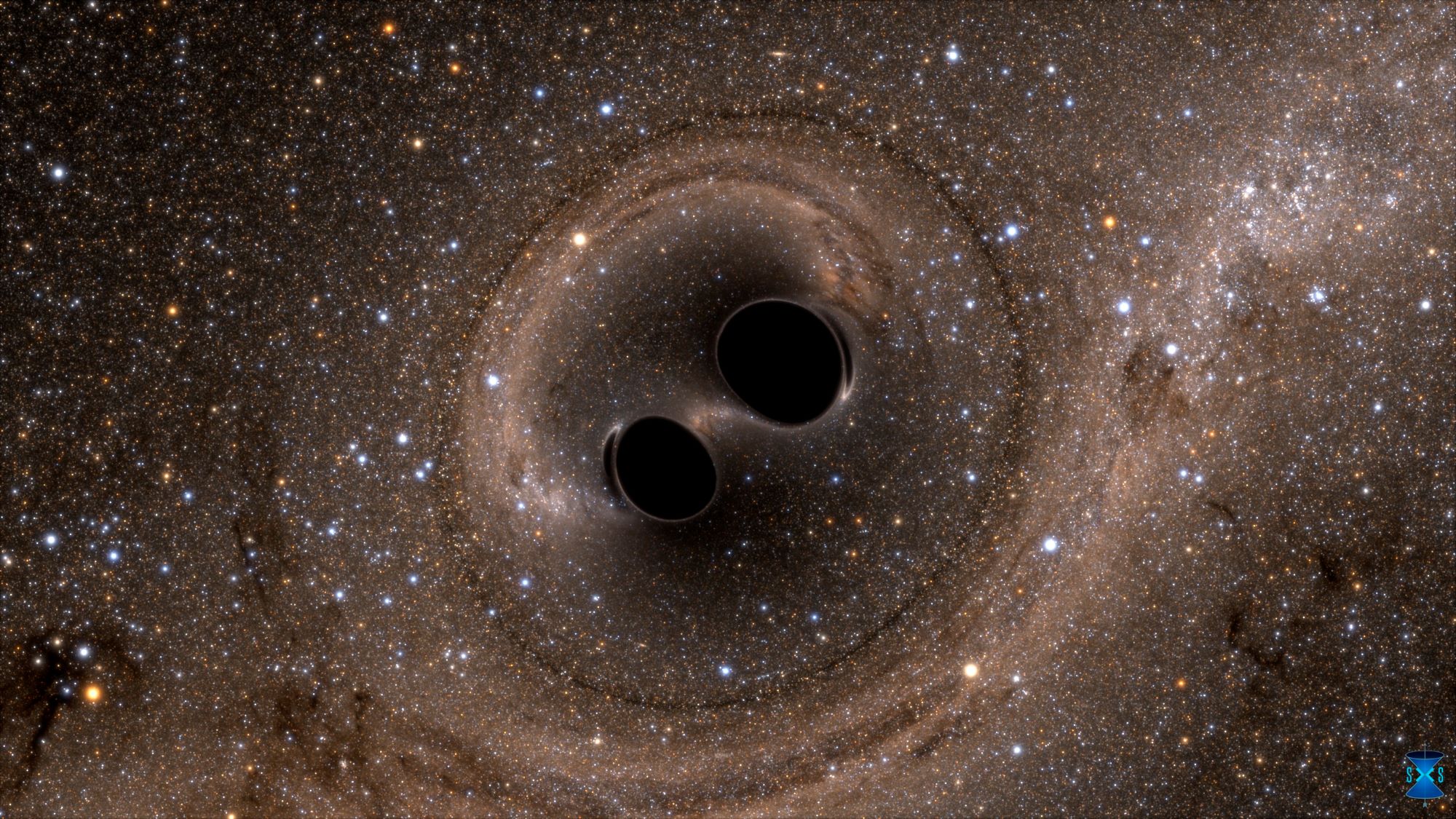

Gravitational wave observatories, such as the Laser Interferometer Gravitational-Wave Observatory (LIGO), are exercises in extreme sensitivity. LIGO’s two experimental ears—one in Louisiana, another in Washington state—listen to ripples in space-time left behind by objects that include black holes and neutron stars. To do this, LIGO carefully watches for minute fluctuations in miles-long laser beams. The challenge is that everything from rumbling tractors to the weather to quantum noise can cause disturbances of their own. A huge part of gravitational wave observation is the science of weeding out unwanted noise.
Now, following a round of upgrades, both of LIGO’s ears can hear 60 percent more events than ever before. Much of the credit goes to a system that corrects for barely perceptible quantum noise by very literally squeezing the light.
Physicists and engineers have been tinkering with light-squeezing in the lab for decades, and their work is showing real results. “It’s not a demonstration anymore,” says Lee McCuller, a physicist at Caltech. “We’re actually using it.” McCuller and his colleagues will publish their work in the journal Physical Review X on October 30.
Gravitational waves are an odd curiosity of how gravity works, as predicted by general relativity. As a falling rock casts ripples in water, sufficiently spectacular events—say, two black holes or two neutron stars merging together—cast waves in the fabric of space-time. Listening into those gravitational waves allows astronomers to peek at massive objects like black holes and neutron stars that are otherwise difficult to see clearly. Scientists can only pull this off thanks to devices like LIGO.
LIGO’s ears are shaped like very large Ls, their arms precisely 4 kilometers (2.49 miles) long. A laser beam, split in two, travels each down one of the arms. Those beams bounce off a mirror at the far end, and return back to the vertex, where they can be recombined into a single beam. Tiny shifts in space-time—gravitational waves—can subtly stretch and squeeze either arm, etching patterns in the recombined beam’s light.

The length shifts are extremely subtle, far too slight to even dream of seeing with the naked eye. The task of detecting such a slight shift becomes even trickier when LIGO detectors are prone to earthquakes, weather, and human activity, all of which create noise that rattles the mirrors or shakes up the laser beams.
Physicists have developed ways of cutting out all that noise. They can keep the arms in a vacuum, devoid of all other matter, to prevent sound waves. They can suspend mirrors to isolate them from vibrations. They can measure the noise of the outside world and adjust the instruments accordingly, like a very large noise-cancelling headset.

But something that these methods cannot filter out is quantum physics. Even in a perfect vacuum, the inherent randomness of the universe at its tiniest scales—particles popping in and out of existence—makes its mark. “You’ve got a natural fluctuation on the level of your measurement that can mask a weak gravitational wave signal,” says Patrick Sutton, an astrophysicist at Cardiff University, a member of the LIGO-Virgo collaboration who wasn’t an author of the new study.
[Related: We’ve recorded a whopping 35 gravitational wave events in just 5 months]
LIGO detected the first-ever confirmed gravitational waves in 2016. Around the same time, its operators were thinking about ways to weed out the quantum disturbances. Physicists can manipulate light by trapping it within a crystal and “squeezing” it. They installed such a crystal on both LIGO detectors in time for the observatory’s third round of detections, which began in 2019.
The upgrade enabled LIGO to work with laser light with higher frequencies. But squeezing light like this came at a cost: making it more difficult to read lower-frequency light. This is problematic, because the gravitational waves from events we can detect—such as black hole mergers—tend to produce a good deal of lower-frequency light in LIGO.
So, after COVID-19 forced LIGO to shut down in mid-2020, its operators added a new chamber to their squeezing setup. This chamber allows a more adaptive approach, manipulating different properties of light at different frequencies. To do this, the chamber must trap light for 3 milliseconds—enough time for light to travel hundreds of miles. The chamber began operation when LIGO’s fourth, current observing run switched on earlier this year.
“It took a lot of engineering and design work and careful thinking to make this an upgrade that does its job and improves squeezing, but doesn’t introduce new noise,” McCuller says.
Both of LIGO’s detectors can now pick up gravitational waves from further into the cosmos and from a wider swath of space. LIGO now hears about 60 to 70 percent more events, according to Sutton. Better sensitivity also allows astronomers to measure gravitational waves with greatly increased precision, which lets them test the theory of general relativity. “It’s a significant jump,” Sutton says.
[Related: Astronomers now know how supermassive black holes blast us with energy]
LIGO’s fellow detector in Europe, Virgo, is implementing the same frequency-dependent squeezing based on its scientists’ own research. “We don’t currently know of any other technique that can improve upon this one,” McCuller says. “In terms of new techniques, this is the best one we actually know how to use at the moment.”
All the gravitational wave events we’ve seen so far came from two black holes or two neutron stars emerging: loud, violent events that leave equally violent splashes. But gravitational wave listeners would like to use gravitational waves to listen to other events, too, such as supernovas, gamma ray bursts, and pulsars. We aren’t quite there yet, but squeezing may get us closer by letting us take full advantage of the hardware we have.
“The key there is just to make the detectors ever more sensitive—bring that noise down and down and down—until, eventually we start seeing some,” Sutton says. “I think those will be very exciting days.”
